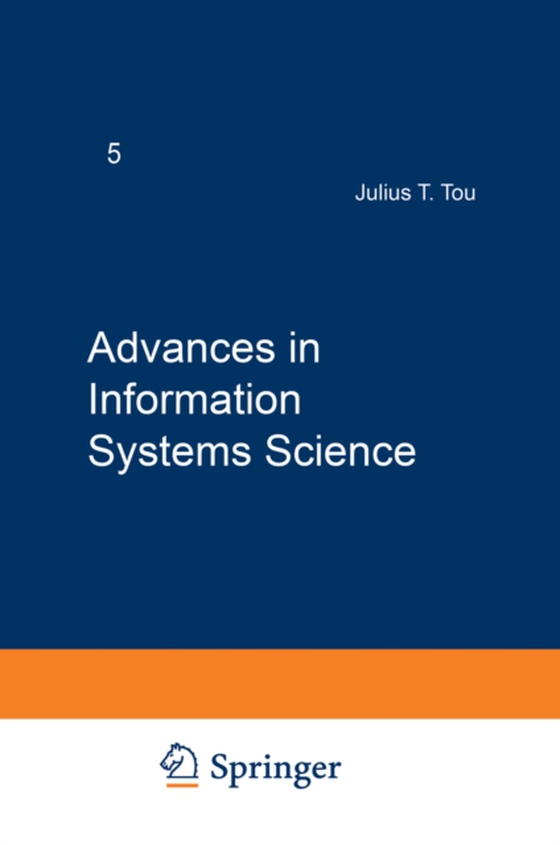
Advances in Information Systems Science e-bog
436,85 DKK
(inkl. moms 546,06 DKK)
This volume, the fifth of a continuing series on information systems science, covers four timely topics which are in the mainstream of this field. In each chapter, an attempt is made to familiarize the reader with basic background information on the advances discussed, so that this volume may be used independently or in conjunction with the previous volumes. The emphasis in this volume is focus...
E-bog
436,85 DKK
Forlag
Springer
Udgivet
6 december 2012
Genrer
Interdisciplinary studies
Sprog
English
Format
pdf
Beskyttelse
LCP
ISBN
9781461582465
This volume, the fifth of a continuing series on information systems science, covers four timely topics which are in the mainstream of this field. In each chapter, an attempt is made to familiarize the reader with basic background information on the advances discussed, so that this volume may be used independently or in conjunction with the previous volumes. The emphasis in this volume is focused upon data organization and access methods, software for on-line minicomputer applications, advances in micropro- graming, and gramm ars and recognizers for formal and natural languages. In Chapter 1, P. C. Patton presents a tutorial survey of data organiza- tion and access methods which play a central role in information system design. Research in information processing has been shifted from numerical data processing to nonnumerical information handling. In the latter case, the information is carried not only by the data but also by the structure and organization of the data base. In this chapter, the author provides the reader with a comprehensive review of various data structures, including linear lists, array structures, tree structures, and multilinked structures. He also discusses the important problem of data-base design and management. This chapter concludes with several examples of information handling systems such as a matrix interpretive system, a generalized information management system, and a criminal justice information system. The rapid reduction in cost and great increase in capability of the mini- computer have made it an attractive machine for information systems.
 Dansk
Dansk

